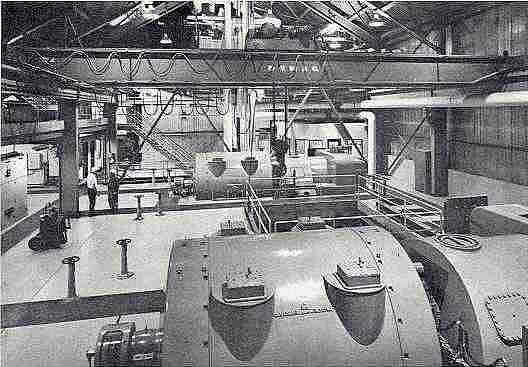Granduc Mine

Milling - Waste Handling Unique
Photo - Crusher House - Those are electric motors
PRIMARY CRUSHING AND STORAGE
Granduc ore after primary crushing. As has been mentioned, waste handling at Granduc was somewhat unique in that it was processed through the underground crushing, handling, storage and haulage facilities as though it were ore. In other words following the same series of treatments as ore, it was hauled to the Tide end and dumped north of the surface plants - that is, into the valley below. A signaling system and conveyor interlocks had been provided to prevent mixing of ore and waste.
Waste haul was accomplished on the midnight shift. To avoid confusion the following report refers to the processing of ore only.
Ore delivered by the haulage trains to the underground crushing plant was dumped into a 1200-ton pocket which was equipped with a "Rock-f1o" dump at the 2600-ft. elevation, extending down to approximately the 2550-ft. horizon with the back face of the throat sloped at 40 degrees.
This slope carried through the draw points to form the feed chute to a reciprocating feeder. Feeder curtains, consisting of six 19-ft. chains, were provided at the drawpoint to control ore flow to the feeder. Trailing ends of the chains were fastened to a cross-bar attached to a Beebe P108-8 tugger with reversible single drum.
The feeder was a Nico "Hydrastroke" model 100 with a 60-in. by 14-ft. deck and design rated at 505 tons per hour. Feed rate to the crusher was controlled by a system of electrical, hydraulic, and mechanical devices.
Discharge was onto a grizzly which effects a rough separation. The minus 6-in. material passed through the grizzly fingers directly to the crusher-discharge conveyor. Plus 6-in. material proceeds to the primary crusher. A Traylor 42- in. by 48-in. heavy-duty jaw crusher. This primary-crushing plant was designed to accommodate another crusher of similar capacity with related equipment, and foundations have been set in place so that it can be added at any time.
MILLING-CONTINUED